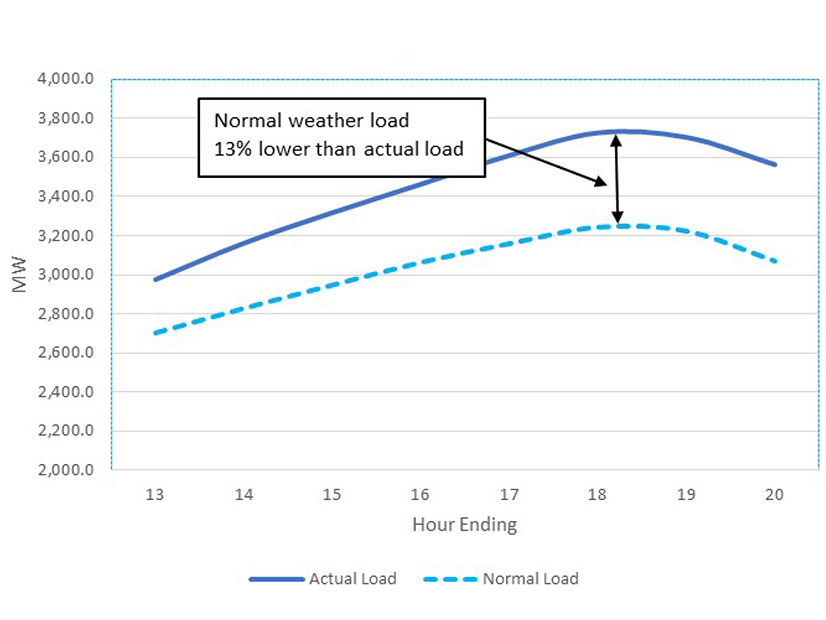
Variable Environmental Costs and Credits
PJM gave a second first read of a proposal to update rules governing variable environmental charges and credits and their inclusion in cost-based energy offers. Generation units receiving production tax credits or renewable energy credits must reflect them in their fuel-cost policies when submitting non-zero cost-based offers into the energy market.
The committee will be asked to endorse the package, which includes changes to Manual 15 and Schedule 2 of the Operating Agreement, at its next meeting.
Market Suspension
PJM’s Stefan Starkov gave a second first read of the revised PJM/Independent Market Monitor package of changes to the treatment of long-term market suspensions. The package, which is intended to address a gap in tariff language regarding how to settle the real-time market if prices can’t be determined, was revised to reflect feedback received at the May MIC meeting.
In September, the Markets and Reliability Committee delayed a vote on rule changes after representatives from Calpine and Vistra made a motion to defer pending further discussions at the MIC. (See “Market Suspension Vote Delayed,” PJM MRC Briefs: Sept. 29, 2021.)
Calpine said the proposal did not adequately address market suspensions lasting a week or longer, and that it was concerned with compensating generators for an extended period based only on their cost‐based offers, which are computed solely on short‐run marginal costs.
The original proposal would have had different rules for outages of more and less than six hours. Outages less than or equal to six hours would substitute the missing hours with available day-ahead or real-time LMPs or the average of adjacent hours. For outages of more than six hours, LMPs would be set at $0/MWh, with make-whole payments at the lesser of dispatched megawatts or actual megawatts using cost-based offers.
The revised proposal would use available DA or RT LMPs or the average of adjacent hours for all outages less than or equal to 24 hours. Pricing for outages longer than 24 hours would be set using a long-term market clearing mechanism incorporating the aggregate supply curve.
The curve would be based on hourly supply-demand intersections constructed from available offers (including available resources not running) and actual generation megawatts as a proxy for demand. Constraints would be ignored. Energy and ancillary services would continue to be calculated at five-minute intervals.
The committee will be asked to endorse the package at its next meeting.
DR/PRD Compliance for Weather-sensitive Load
Sharon Midgley, representing Exelon (NASDAQ:EXC) and Baltimore Gas and Electric (BGE), presented a first read of a problem statement and issue charge to consider an alternative demand response/price-responsive demand (PRD) compliance construct for weather-sensitive load, such as residential demand impacted by summer air conditioning.
Midgley said the current rules compare metered load under prevailing weather conditions to the peak load contribution (PLC) based on weather-normalized peak weather conditions.
Capacity compliance for DR and PRD is currently based on the firm service level (FSL), calculated as the PLC minus the amount of installed capacity the DR/PRD resource cleared in the capacity auction. Compliance is achieved if metered load is at or below the FSL.
Over the summers of 2018-2021, the actual peak load for BGE’s weather-sensitive residential customers averaged 13% higher than the weather-normalized peak load. The disparity was the largest in 2019, with weather-normalized load 22% lower than actual load.
The discrepancy means DR and PRD providers may not be able to offer the full capability of their programs into the capacity market because of unachievable FSL, Midgley said.
BGE proposed the issue be considered by the Demand Response Subcommittee, but some stakeholders suggested it would be better referred to the Resource Adequacy Senior Task Force.
The committee will be asked to approve the issue charge at its next meeting.
Capacity Offer Opportunities for Generation with Co-located Load
PJM’s Lisa Morelli led a discussion on solution options for capacity offer opportunities for generation with co-located load. (See “Co-located Load Issue Charge Endorsed,” PJM MIC Briefs: Jan. 12, 2022.)
Enel X North America, which serves load customers with on-site generation, said capacity accreditation for such customers “is a ripe area for review, particularly given technological innovation and direction from FERC Order 2222 to fully value injections from generation sited with load as distributed energy resources.
“Load that is not station power [should be treated] as any other load,” Enel said. “Absent a transmission cost being allocated to the co-located load, these costs would be unfairly and unnecessarily passed on to all other ratepayers.”
Operating Reserve, Quadrennial Review
Members also continued work on an initiative to clarify operating reserve rules for resources operating as requested by PJM (See “Operating Reserve Clarification,” PJM MIC Briefs: Feb. 9, 2022) and the Quadrennial Review, which determines the shape of the variable resource requirement curve, the cost of new entry for each locational deliverability area, and the methodology for determining the net energy and ancillary services revenue offset for the PJM region and each zone.


